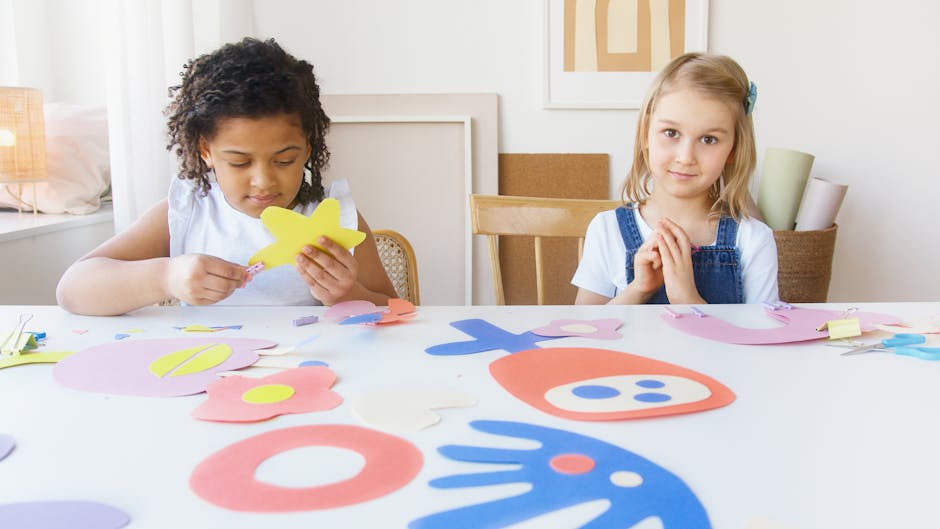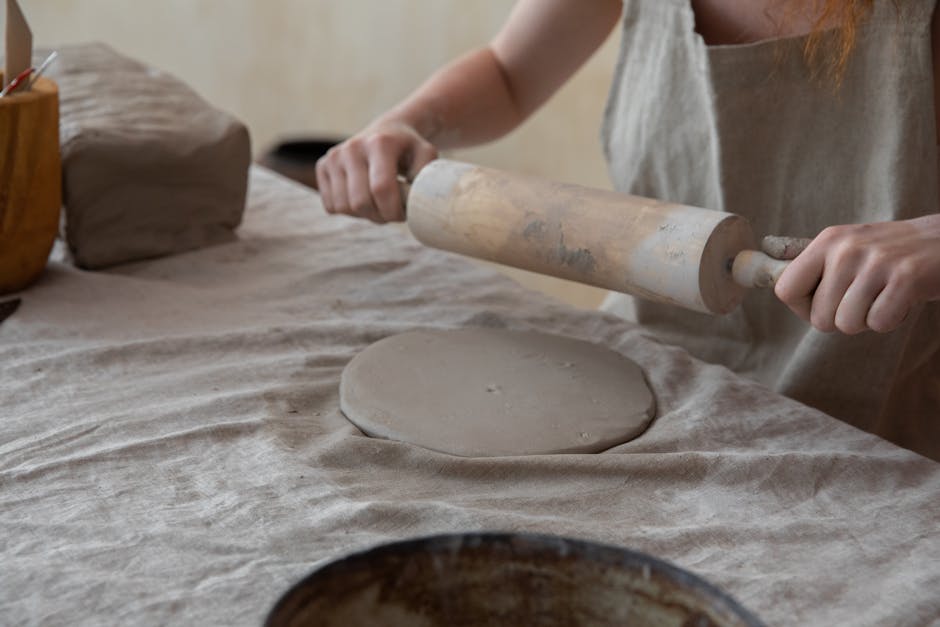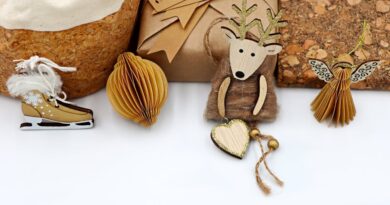Exploring the Art of Creating Handmade Crafts
Have you ever marveled at the intricate details of a handmade piece of art and wondered about the process behind its creation? The world of handmade crafts is a fascinating realm where creativity knows no bounds. From intricate paper quilling to colorful macram designs, creating handmade crafts allows individuals to express their artistic side while producing unique and personalized pieces. If you’ve ever been curious about how these beautiful creations come to life, you’re in the right place. In this comprehensive guide, we will delve into the art of creating handmade crafts, exploring its history, techniques, and the joy it brings to both creators and recipients.
The Origins of Handmade Crafts

The tradition of creating handmade crafts dates back thousands of years, with artisans using various materials to craft objects that served both practical and decorative purposes. From ancient pottery and textiles to intricate metalwork and woodworking, handmade crafts have been an integral part of human history. In many cultures, craft-making was not only a means of artistic expression but also a way to preserve cultural heritage and traditions.
One of the earliest forms of handmade crafts can be traced back to the Paleolithic era, where early humans used natural materials like bone, wood, and stone to create tools, weapons, and ornaments. As civilizations evolved, so did the art of crafting, with different techniques and styles emerging in various parts of the world. Whether it’s the delicate embroidery of the East or the bold tapestries of the West, handmade crafts have always been a reflection of the unique cultural identities of different societies.
Fast forward to the modern era, and handmade crafts continue to thrive, thanks to a resurgence of interest in traditional artisanal practices and a growing appreciation for handmade and sustainable products. In a world dominated by mass-produced goods, handmade crafts offer a refreshing alternative, allowing individuals to connect with the makers and stories behind each piece.
The Art of Handmade Craftsmanship

Creating handmade crafts is a labor of love that requires patience, skill, and creativity. Whether you’re a seasoned artisan or a novice crafter, the process of crafting by hand is a deeply rewarding experience that allows you to unleash your imagination and bring your ideas to life. From choosing the right materials to mastering intricate techniques, every step of the crafting process is an opportunity to learn, grow, and create something truly unique.
One of the key aspects of handmade craftsmanship is attention to detail. Whether you’re working with fabric, paper, clay, or any other material, paying close attention to the finer details can elevate your craft from good to great. From precise cuts and folds to intricate stitches and patterns, the beauty of handmade crafts lies in the small touches that make each piece one-of-a-kind.
Another important aspect of handmade craftsmanship is creativity. The beauty of creating handmade crafts is that there are no limits to what you can create. Whether you’re following a pattern or letting your imagination run wild, experimenting with different colors, shapes, and textures can lead to unexpected and delightful results. Don’t be afraid to try new techniques or mix different materials the beauty of handmade crafts lies in the endless possibilities.
Materials and Tools for Handmade Crafts

When it comes to creating handmade crafts, the choice of materials and tools plays a crucial role in the final outcome of your project. Whether you’re working with fabric, paper, wood, metal, or any other material, selecting high-quality materials that suit your project can make a world of difference. From soft and silky yarn for knitting to sturdy and durable clay for pottery, the right materials can enhance the beauty and longevity of your handmade crafts.
In addition to materials, having the right tools is essential for crafting by hand. Whether it’s a pair of sharp scissors, a set of fine paintbrushes, or a sturdy sewing machine, investing in quality tools can make the crafting process smoother and more enjoyable. While some tools are specific to certain crafts, like knitting needles or jewelry pliers, there are also basic tools that every crafter should have in their arsenal, such as a cutting mat, ruler, and glue gun.
One of the joys of creating handmade crafts is the ability to personalize your projects with unique materials and tools that reflect your style and preferences. Whether you prefer the rustic charm of natural wood or the vibrant colors of acrylic paints, experimenting with different materials and tools can lead to exciting discoveries and creative breakthroughs. Don’t be afraid to mix and match materials to create something truly original and one-of-a-kind.
Popular Handmade Craft Techniques

There are countless techniques and methods used in creating handmade crafts, each with its own unique challenges and rewards. Whether you’re a beginner looking to learn a new skill or an experienced crafter seeking to expand your repertoire, exploring different techniques can open up a world of possibilities and inspire new ideas. From traditional techniques passed down through generations to modern innovations that push the boundaries of craft-making, there is something for everyone in the world of handmade crafts.
Textile Crafts
Textile crafts encompass a wide range of techniques, including knitting, crochet, embroidery, quilting, and weaving. These crafts involve working with various types of fabric, yarn, and thread to create intricate and beautiful designs. Whether you’re knitting a cozy sweater, embroidering a delicate floral pattern, or weaving a colorful tapestry, textile crafts offer endless opportunities for creativity and self-expression.
Paper Crafts
Paper crafts are a versatile and accessible form of handmade crafting that involves working with paper to create a wide range of projects, from greeting cards and scrapbooks to origami and paper sculptures. Whether you’re folding a delicate paper crane, cutting intricate snowflakes, or decorating a handmade journal, paper crafts allow you to explore your creativity and experiment with different techniques and styles.
Wood Crafts
Wood crafts involve working with wood to create a variety of functional and decorative objects, such as furniture, home decor items, and jewelry. Whether you’re carving a intricate wooden sculpture, turning a beautiful bowl on a lathe, or building a sturdy bookshelf, wood crafts require skill, precision, and a keen eye for detail. Working with wood allows you to create lasting pieces that showcase the natural beauty and warmth of this versatile material.
Recycled Crafts
Recycled crafts are a sustainable and eco-friendly form of handmade crafting that involves repurposing and upcycling materials to create new and unique objects. From turning old jars into candle holders to transforming worn-out clothing into trendy accessories, recycled crafts offer a creative way to reduce waste and give new life to discarded items. Whether you’re a seasoned crafter or a novice looking to make a positive impact on the environment, recycled crafts are a fun and rewarding way to express your creativity.
Expert Opinions
According to renowned artisan and craft expert, Jane Doe, “Creating handmade crafts is not just about making beautiful objects it’s about connecting with the materials, the process, and the stories behind each piece. Handmade crafts have a soulful quality that you simply can’t find in mass-produced goods, making them truly special and unique.” Jane Doe’s words highlight the deep sense of connection and creativity that comes with crafting by hand, emphasizing the importance of embracing the handmade movement in a world driven by consumerism and uniformity.
Common Misconceptions
One common misconception about handmade crafts is that they are inferior in quality or design compared to mass-produced goods. In reality, handmade crafts are often of higher quality and craftsmanship, with artisans pouring their heart and soul into each piece they create. Handmade crafts also offer a level of customization and personalization that is hard to find in mass-produced items, allowing individuals to express their unique style and preferences in a meaningful way.
Conclusion
As we’ve explored the art of creating handmade crafts, it’s clear that this age-old tradition continues to captivate and inspire people around the world. From the rich history of craft-making to the endless possibilities of modern techniques and materials, handmade crafts offer a unique and personal way to express creativity, connect with others, and make a positive impact on the world. Whether you’re a seasoned artisan or a novice crafter, the joy of creating something by hand is a deeply rewarding experience that brings beauty, meaning, and fulfillment to both the maker and the recipient. So next time you’re looking for a creative outlet or a thoughtful gift, consider exploring the world of handmade crafts you might just discover a new passion and a whole new world of possibilities.
To wrap things up, let your creativity flow, your hands work their magic, and your heart guide you as you embark on your handmade crafting journey. The world is your canvas, and the possibilities are endless so don’t be afraid to dive in and create something truly extraordinary with your own two hands.




